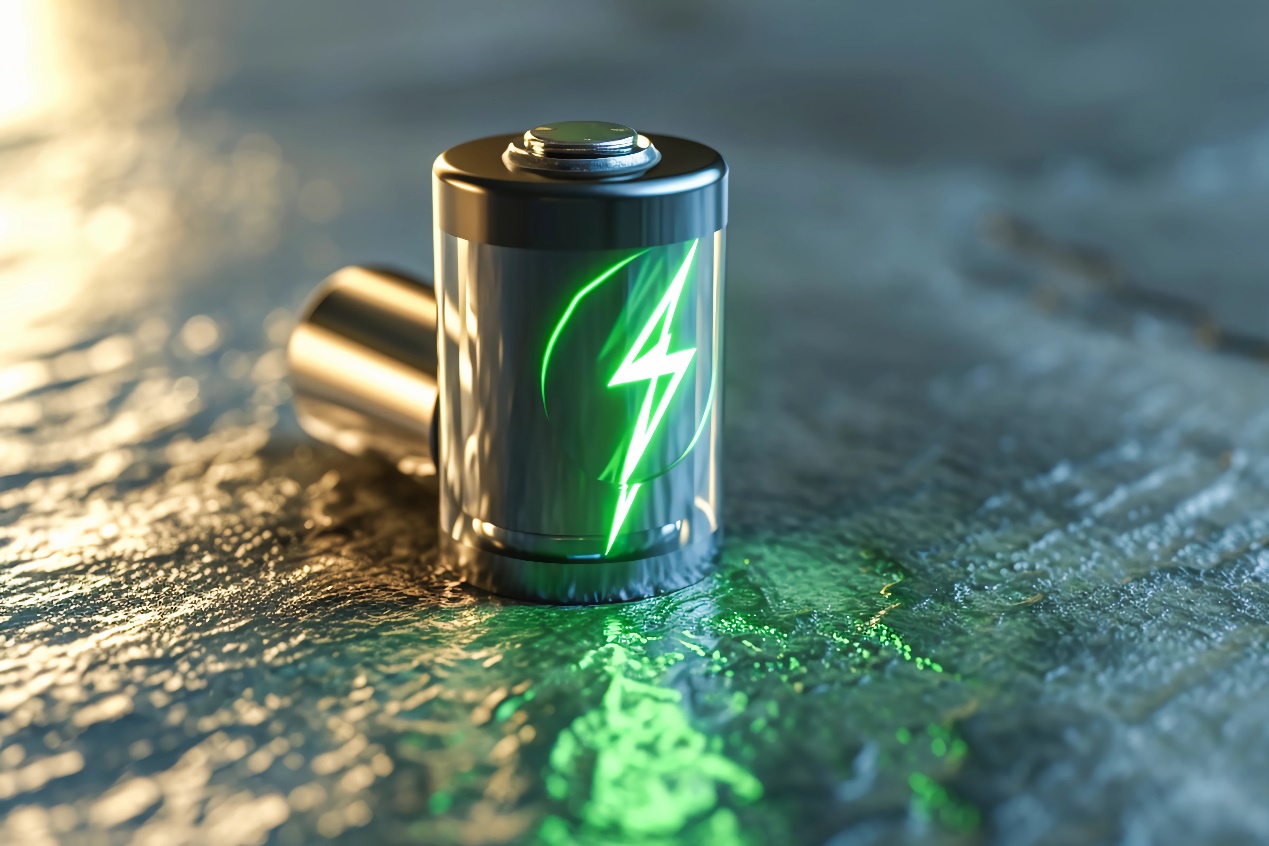Lithium-ion battery
Lithium thionyl chloride battery
Guoan Energy Technology (Dongguan) Co., Ltd. R&D Center
Lithium sub-batteries are disposable batteries and cannot be recharged. Lithium batteries include disposable lithium primary batteries, such as lithium sub-batteries, lithium manganese batteries, lithium sulfur batteries, and lithium iron batteries. These are all primary batteries and cannot be recharged. Rechargeable lithium batteries are called secondary batteries, or more accurately, lithium-ion batteries, with a nominal voltage of 3.7V. There are also lithium-ion batteries with lithium iron phosphate as the cathode material, with a nominal voltage of 3.2V.

Lithium thionyl chloride batteries have the chemical name Li-SOCl2, and are also known as lithium sub-batteries. The long storage life of lithium sub-batteries is due to the passivation of the lithium surface, which inhibits internal side reactions. However, the formation of the passivation film is relative. There are two types of passivation films: one is a pure LiCl passivation film, and the other is an impurity passivation film. Due to its special chemical properties and passivation effect, its annual self-discharge current is less than 1%, and its storage life is more than 10 years. Therefore, it is widely used as a power source in water meters, electricity meters, and gas meters.
Lithium sub-batteries and lithium manganese batteries are both disposable lithium batteries, meaning that once the battery's capacity is exhausted, it cannot be recharged.
The full name of a lithium sub-battery is a lithium thionyl chloride battery, Li-Socl2. The cathode is thionyl chloride, with an open-circuit voltage of 3.6V and a cutoff voltage of 2.0V.
The full name of a lithium manganese battery is a lithium manganese dioxide battery, Li-MnO2. The cathode is manganese dioxide, with an open-circuit voltage of 3.0V and a cutoff voltage of 1.8V.
Lithium sub-batteries usually use a steel shell, typically 304 food-grade stainless steel. However, some unscrupulous manufacturers use iron shells to reduce costs, so careful discrimination is necessary when selecting them.
Voltage hysteresis is a characteristic of lithium sub-batteries and the basis for their existence. The principle is as follows: the thionyl chloride electrolyte that makes up the battery is a strong oxidizing chemical that acts as both the electrolyte and the cathode active material. When thionyl chloride comes into contact with the negative electrode active material, metallic lithium, a dense passivation film immediately forms on the surface of the metallic lithium. This passivation film is an ionic conductor, and lithium ions can migrate through it. However, because the migration rate is very low, it hinders the battery reaction. When the current flowing through the battery is no more than 1 μA/cm² (metallic lithium surface area), the migration rate of lithium ions in the passivation film can meet the requirements. When the current is large, the limitation of the lithium ion migration rate in the passivation film has a serious impact, and a large voltage drop occurs at both ends of the passivation film. This is specifically manifested as a low battery load voltage. As the current continues to flow, the passivation film gradually breaks down, the voltage drop at both ends gradually decreases, and the battery load voltage gradually increases until it becomes normal. The gradual breakdown process of the passivation film is the process of eliminating the battery voltage hysteresis. Because the battery's passivation film is produced by the reaction of the cathode active material, thionyl chloride, with metallic lithium, the passivation process (i.e., the hysteresis process) consumes a certain amount of battery capacity, and this consumed capacity is the main component of the battery's self-discharge. Of course, battery self-discharge also includes the capacity consumed by the small discharge current generated by the ohmic resistance between the positive and negative electrodes.
Depending on the requirements, lithium sub-batteries can be divided into power type and energy type. Power type lithium sub-batteries have a stronger high-current output capability, while energy type lithium sub-batteries store more energy. For applications with a longer lifespan, such as 5 years, and standby and operating currents in the μA range (e.g., 20 μA-30 μA), energy type lithium sub-batteries are preferred.
After lithium sub-batteries are produced and packaged, they need to be stored for several months, and pre-discharge treatment, or activation to eliminate the passivation film, is required before shipment. Generally, energy type lithium sub-batteries are discharged at 10-30 mA or with a 330 Ω resistor for 5-10 minutes.
The current used in electricity meters with lithium sub-batteries is between 20 μA and 30 μA, so high-current discharge is not necessary. The passivation phenomenon can ensure the long-term storage capacity of the lithium sub-batteries. If serious passivation occurs, it must be activated and the passivation phenomenon eliminated before production and use.
The long storage life of lithium sub-batteries is due to the lithium surface passivation inhibiting internal side reactions; however, the formation of the passivation film is relative. There are two types of passivation films: one is a pure LiCl passivation film, and the other is an impurity passivation film. Impurity passivation films are to be avoided as they are harmful; the LiCl passivation film is an inherent characteristic of the battery. The formation of the passivation film makes high-current output difficult; therefore, during use, the passivation film must first be removed or activated by low-current discharge or by connecting an external resistor. Voltage hysteresis is a characteristic of lithium sub-batteries and the basis for their existence. The principle is as follows: the thionyl chloride electrolyte that makes up the battery is a strong oxidizing chemical that acts as both the electrolyte and the cathode active material. When thionyl chloride comes into contact with the negative electrode active material, metallic lithium, a dense passivation film immediately forms on the surface of the metallic lithium. This passivation film is an ionic conductor, and lithium ions can migrate through it. However, because the migration rate is very low, it hinders the battery reaction. When the current flowing through the battery is no more than 1 μA/cm² (metallic lithium surface area), the migration rate of lithium ions in the passivation film can meet the requirements. When the current is large, the limitation of the lithium ion migration rate in the passivation film has a serious impact, and a large voltage drop occurs at both ends of the passivation film. This is specifically manifested as a low battery load voltage. As the current continues to flow, the passivation film gradually breaks down, the voltage drop at both ends gradually decreases, and the battery load voltage gradually increases until it becomes normal. The gradual breakdown process of the passivation film is the process of eliminating the battery voltage hysteresis. Because the battery's passivation film is produced by the reaction of the cathode active material, thionyl chloride, with metallic lithium, the passivation process (i.e., the hysteresis process) consumes a certain amount of battery capacity, and this consumed capacity is the main component of the battery's self-discharge. Of course, battery self-discharge also includes the capacity consumed by the small discharge current generated by the ohmic resistance between the positive and negative electrodes.
In a battery, if strictly no other substances are present, the passivation film formed inside the battery will become thicker with storage time. However, the thicker the passivation film, the more it will prevent the reaction between thionyl chloride and lithium metal. In other words, the formation rate of the passivation film will gradually decrease with storage time, and the capacity consumption will also gradually decrease. Therefore, this type of battery exhibits severe voltage lag, but its self-discharge rate is extremely low, less than 0.5% per year. However, due to the severe voltage lag, its application is greatly limited. If a certain current pulse is required, the requirements cannot be met.
Guoan Energy Technology (Dongguan) Co., Ltd. R&D Center
Service Hotline
Email:zhangjie@ganeny.com
Website:www.ganeny.com
Address: No. 79, Shayuan Road, Shabu, Dalang Town, Dongguan City, Guangdong Province, China

Official Public Account
Privacy Policy | SEO | Support:300.cn
